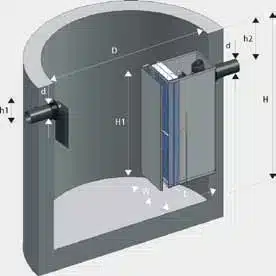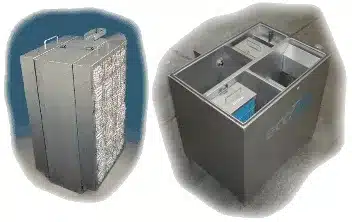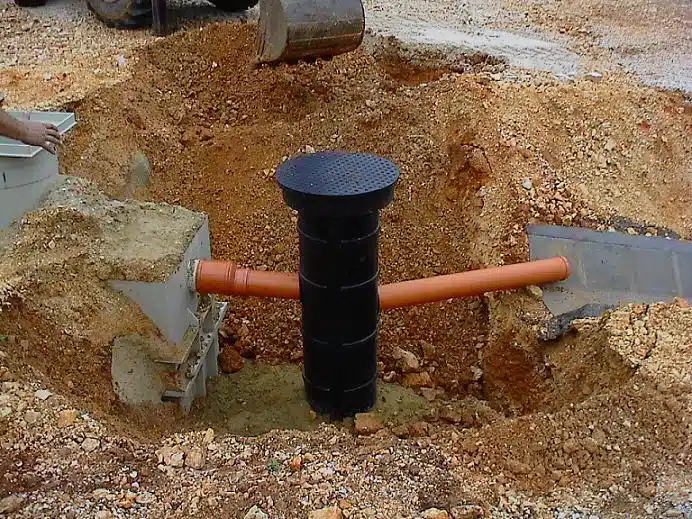What’s hidden beneath the busy streets of our nation’s capital? The District of Columbia’s underground is a wonder of engineering. It combines old infrastructure with new solutions. At the center are the District of Columbia Below Ground OWS, key to managing runoff and protecting our waterways.
Washington DC’s underground is a complex network of sewers, tunnels, and OWS systems. These hidden gems are crucial for keeping the city clean and running smoothly. The area’s unique geology has shaped these underground systems over millions of years.
From the city’s early days to now, the underground waterways have changed to serve the city’s needs. The sewers are more than just pipes; they’re complex networks for stormwater and wastewater. This hidden world shows the city’s dedication to being green and caring for the environment.
Key Takeaways
- Freytech Inc. District of Columbia Below Ground OWS are essential for managing urban runoff in DC
- The city’s subterranean infrastructure is influenced by unique geological features
- Underground waterways in DC have evolved to meet growing urban needs
- Sewers in Washington DC handle both stormwater and wastewater
- The hidden infrastructure contributes to sustainable urban development
Introduction to Below Ground Oil Water Separators in DC
Below Ground Oil Water Separators are key in Washington DC’s urban setup. They are a big part of the city’s stormwater and wastewater systems. These systems work hard to keep our waterways clean and safe from harmful pollutants.
Definition and Purpose of OWS Systems
Below Ground OWS are made to keep oil, grease, and other harmful substances out of water. They act as a first defense, stopping these pollutants from getting into our water. This helps keep DC’s water ecosystems healthy.
Importance in Urban Infrastructure
In a busy city like Washington DC, Below Ground Oil Water Separators are crucial. They stop oil and grease from getting into the stormwater system. This keeps our rivers and streams clean and helps the city follow environmental laws.
Regulatory Framework in Washington DC
The District of Columbia has strict rules for managing stormwater and preventing pollution. The city’s Department of Energy & Environment makes sure Below Ground OWS are set up and maintained right. These rules make sure businesses and industries handle their wastewater properly, keeping DC’s water safe for the future.
Historical Development of DC’s Subterranean Infrastructure
Washington DC’s underground world started in the late 1800s. The city’s unique geology was key in creating its underground systems. Rocks like the Potomac group and Upper Cretaceous deposits helped shape the tunnels.
Drainage tunnels were a big step in DC’s water management. They were built to control stormwater and stop flooding. The Lydecker Tunnel from the 1880s shows early efforts to manage city runoff.
As DC grew, it needed better water management. This led to the combined sewer system in the early 1900s. It was made to handle both stormwater and wastewater, fitting the city’s growing needs.
The Piney Branch relief sewer from the 1930s shows how DC’s underground changed over time. It highlights how the city updated its infrastructure for more people. Today, these old systems still guide DC’s water management and city planning.
District of Columbia Below Ground OWS: Design and Function
Below ground oil water separators (OWS) are key in DC’s water system. They can handle a lot of water and separate oil and grease well. The city uses advanced OWS technology to keep water clean.
Components of Below Ground OWS
DC’s below ground OWS have important parts. Vertical screens with oil absorbent mats, like MYCELX Versimats, catch oil particles. Filter housings with special cartridges add more treatment. Together, they make sure water is clean.
Separation Process and Efficiency
The separation in DC’s OWS is very effective. Enhanced coalescing technology helps separate contaminants from water well. These systems can remove up to 5 parts per million (PPM) of oil. This is better than the North American limit of 10 PPM. Some systems can even remove trace amounts of emulsified oil, down to 0.1 PPM.
Integration with Existing Sewer Systems
DC’s OWS work well with the city’s sewer systems. This makes sure wastewater treatment works better across the city. By removing oil and grease before it gets to the sewer, these systems keep DC’s water infrastructure healthy. They also help meet strict limits on hydrocarbon discharge.
Stormwater Management and OWS in the District
The District of Columbia has a complex stormwater system with oil water separators (OWS), sewers, and tunnels. This setup helps prevent pollution and keeps local waterways safe. OWS are key in treating runoff from city areas, like near car repair shops and industrial sites.
DC has strict stormwater rules to protect its water infrastructure. The GreenWrench program helps businesses follow these rules. It offers resources for managing hazardous waste, universal waste, and used oil. This program guides businesses through air, water, and land regulations for stormwater.
DC focuses on preventing pollution in various industries with its urban hydrology approach. By using OWS in its stormwater system, DC can manage urban runoff better. This strategy keeps ecosystems healthy and protects the city’s water resources.
These separators are crucial in storm water systems. They process runoff to meet the US EPA’s Clean Water Act standards. With effective oily water treatment, facilities protect the environment and dodge big fines.










